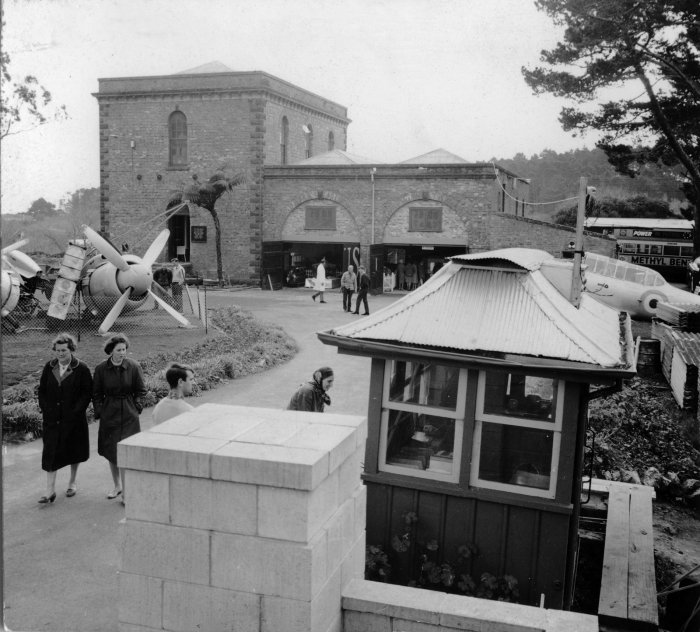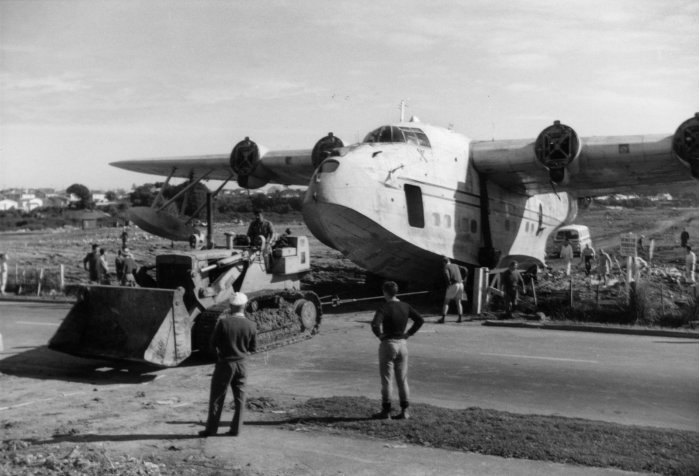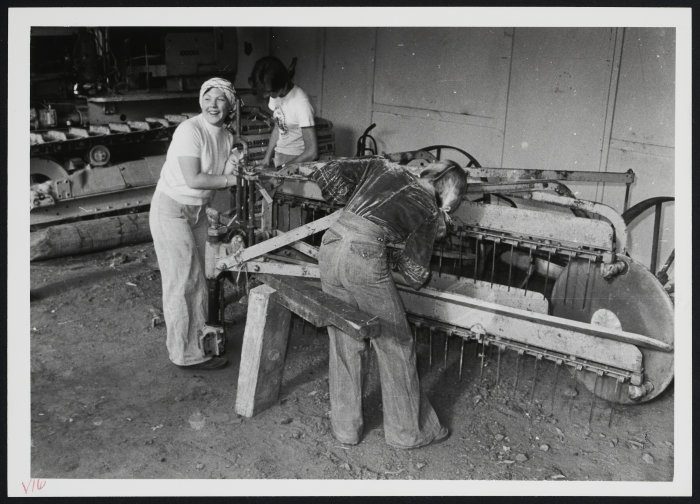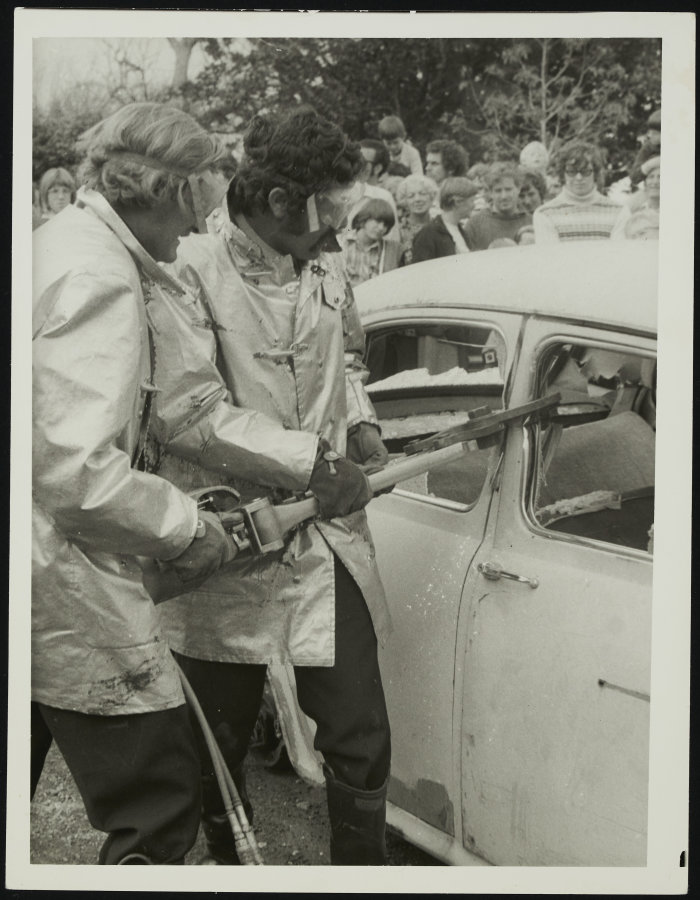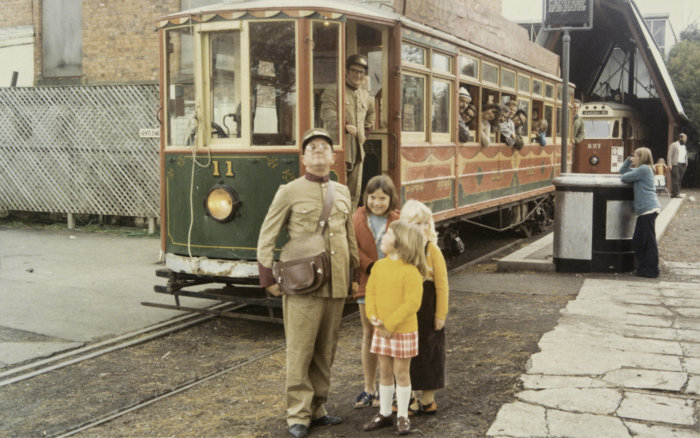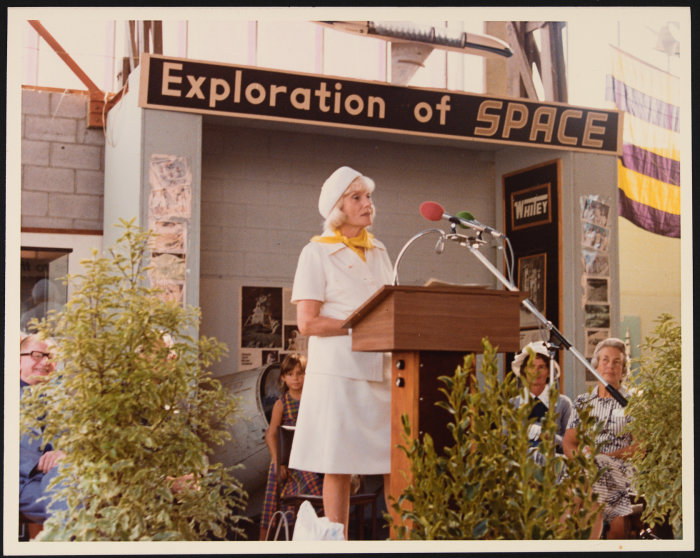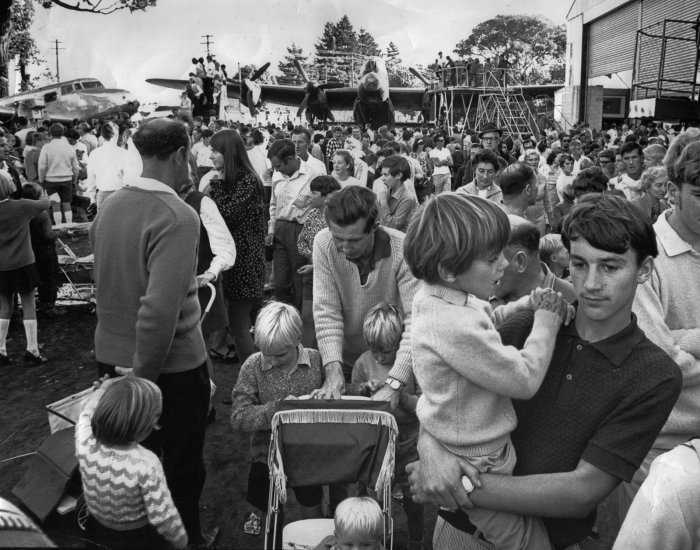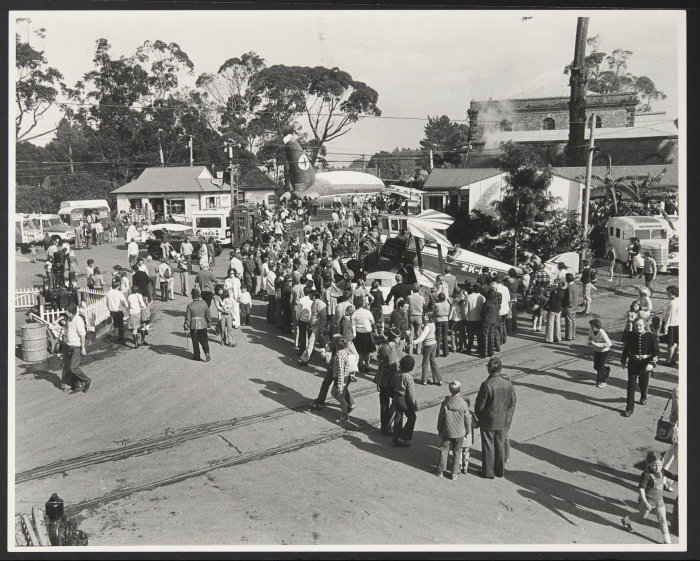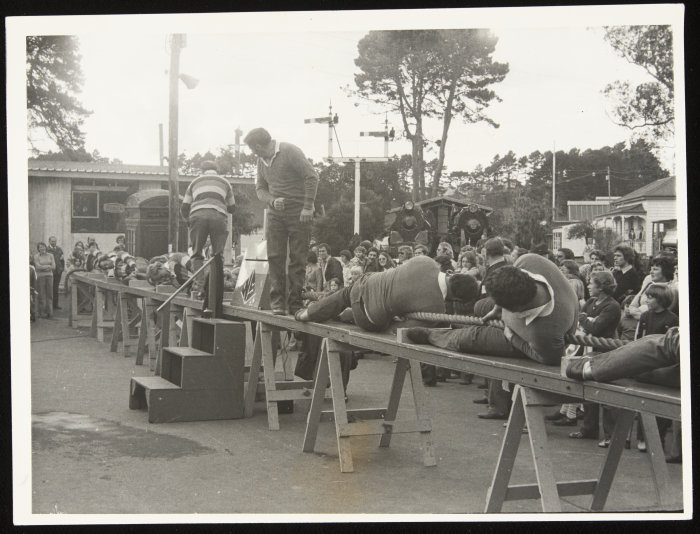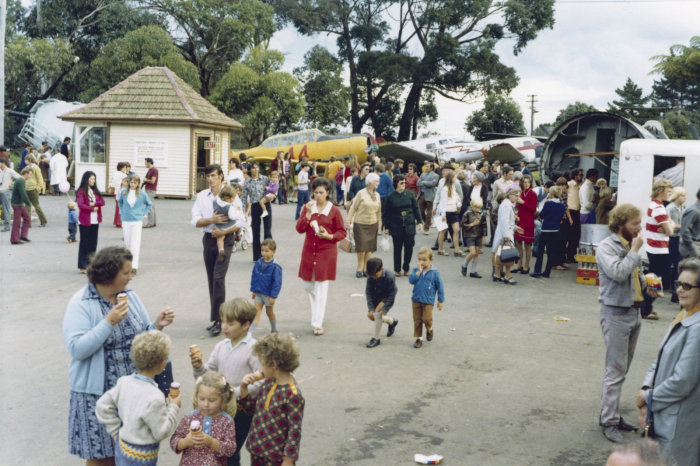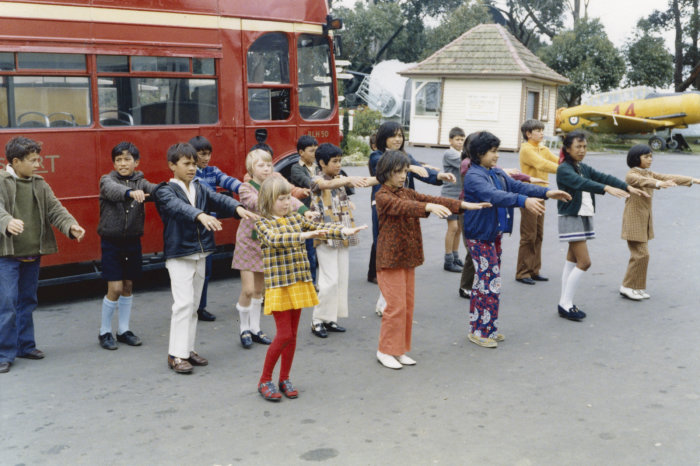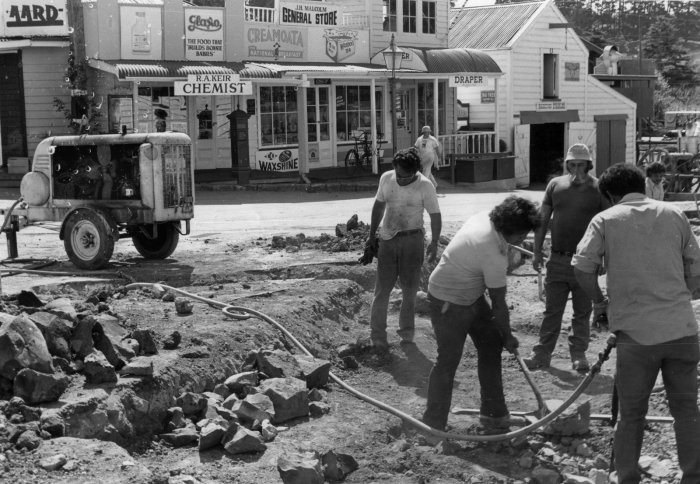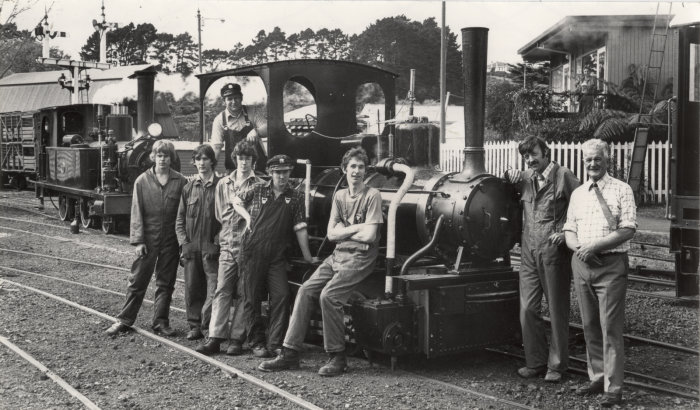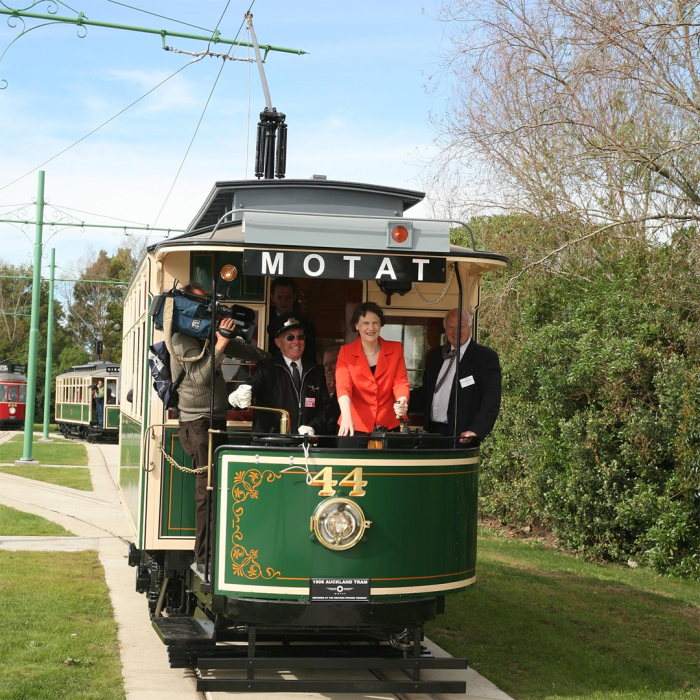Celebrating 60 years of MOTAT
MOTAT, the Museum of Transport and Technology, opened to the public in 1964 at its Te Wai Ōrea, Western Springs site at Great North Road, Auckland.
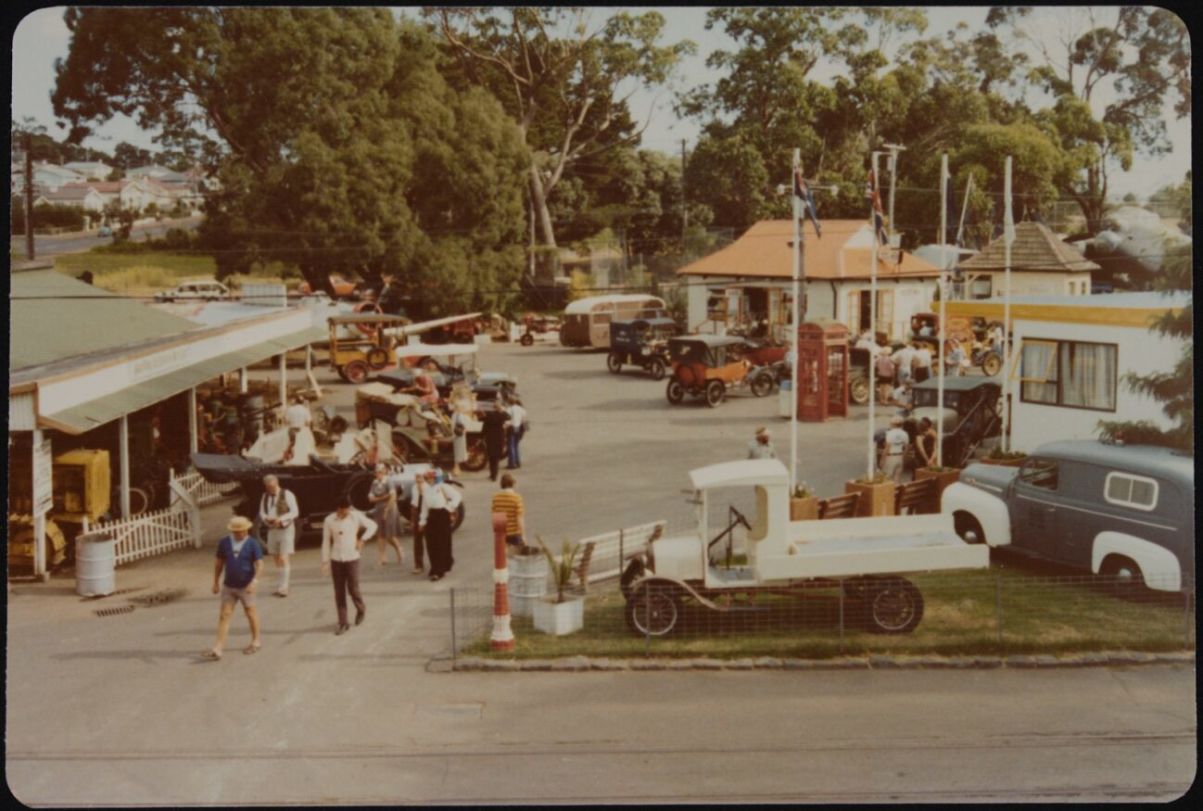
60 years of MOTAT
Join us in celebrating 60 years of MOTAT as we look back at our rich history, where we are now, and the exciting plans we have for the future.
What is now the MOTAT Society, represents MOTAT’s founding institutions of the Old Time Transport Preservation League, the Royal Aeronautical Society (New Zealand) and the Historic Auckland Society who joined forces to establish a Museum of Transport and Technology. The MOTAT Society continues to be a trusted, supporting organisation to the Museum.
It’s an extra special anniversary year with our much-anticipated science and technology centre, Te Puawānanga, opening late May 2024. Three unique spaces form the centre and provide a place for everyone to discover and learn. This new experience is at the heart of MOTAT’s vision to use the past, present and future technology and ingenuity of Aotearoa to educate and inspire the innovators of tomorrow.
Were you at MOTAT back in 1964? We’d love to hear from you or your family.
Through the year you’ll hear more about the past 60 years as we dig into the archives and collection history. Our LIVE Day on 19 October will be a special 60th anniversary celebration, so mark this date in your calendar now.
For now, here is an eclectic mix of images from our archives and just some of the significant dates from the past 60 years that got us to where we are today.
Photo album
Images are from MOTAT Walsh Memorial Library archives. For image credits see here>>
What’s happened over 60 years?
In 1960 the Old Time Transport Preservation League, the Royal Aeronautical Society (New Zealand) and the Historic Auckland Society joined forces with a view to establishing a Museum of Transport and Technology on the land they were able to lease from the Auckland Council in Western Springs. This site was large enough to accommodate the combined entities' sizeable transport and technology heritage objects.
Now held on the third Sunday of most months, LIVE Days have always been a crowd-drawing event.
Trams ran within the Great North Road museum grounds, beginning from behind the Pumphouse and along the track you still inside the grounds and terminated beside where Gate C is now (just past the Village).
On 31 March 1973, we opened the doors to our first purpose-built building at Great North Road, showcasing everything from horse-drawn wagons to motorcycles, bicycles, cars and everything in between.
MOTAT's first Aviation exhibition space. Now where Building 1 and 2 and the Walsh Memorial library are, the "Pioneers of Aviation" building, was officially opened by Jean Batten (see the photo album above for a photo of Jean Batten speaking at the opening ceremony).
Stage 1 of the tramway extension built the tramlines along Great North Road as far as Motions road. The line was built by unemployed labour on Government work schemes between 1976 and 1980.
The first sod for the tramway extension was turned 1 Aug 1976 using the same shovel that was used to turn the first sod for the building of the Auckland Electric Tramway System 1 Aug 1901 – the same day 75 years later.
On this same day, the mercury arc rectifier was switched on and became the tramway operating power supply. Before this, the tramway was powered from the Auckland trolley bus system, which closed in September 1980.
Stage 2 was the completion of the tramway extension from Motions Road corner along the road to the present Zoo tram stop. Back then MOTAT Motions Road did not yet exist!
Prior to this date, all Rail operations were at Great North Road. Some significant dates for Rail include:
• 1957: MOTAT’s very first rail collection item acquired (Bertha)
• 1963: First rail collection items on site at Western Springs (Bertha and D170)
• November 1966: first steam locomotive operation at MOTAT
• 16/17 May 1970: Opening of the railway at M1 (ie the railway by Waitakere Station)
• September 1972: Waitakere station arrives on site
• 15 December 1973: Waitakere station opened as part of the 100th anniversary celebrations of railways in Auckland
• 20 December 1975: arrival of K900
• 18 December 1982: Opening of the railway at M2
• 7 August 2008: L507 takes part in the Main Trunk Centenary celebrations, hauling the re-enactment of the Parliamentary Special between Horopito and Makatote
• 19 August 2018: Launch of F180 ‘Meg Merrilies’
• 19 November 2023: Launch of Bertha and the Oberursel
MOTAT was the first to bring the concept of a science centre to New Zealand. Taking the principle of visitor participation even further, visitors were invited to experiment with exhibits which demonstrated basic scientific principles and the application of technology.
Acquiring the space that is now known as MOTAT Motions Road and Aviation Hall, the Aviation Centre was the first build on this ex-landfill site to enable the undercover housing of large and more aircraft in the collection.
What is now Building 5 – and where our new Te Puawānanga Science and Technology Centre is being developed – was built from the ground up and completed in December 1989. The Centre was opened by HRH Prince Edward on 24 January 1990. In a brochure of the time, it reads: “Here you can explore and experiment with a large and ever increasing number of interactive exhibits. Pull, push, climb, excite your senses and inspire your curiosity. It's hands-on, entertaining and informing, provides you with answers on everyday life questions and shows that science is fun!
As the first and leading Science Centre in New Zealand it offers you over 20,000 sq ft of display
space, filled with experiences in science and technology. It also offers special and travelling exhibitions, and the latest in audio/visual technology.”
MOTAT Society established under MOTAT Act, replacing The Society of the Museum of Transport and Technology of NZ Inc.
Restoration and earthquake strengthening of the building was completed in 2002 thanks to a huge effort by the MOTAT Steam Volunteer team.
An extension from the Zoo up to the MOTAT Motions Road terminus was opened 27th April 2007 when Tram No. 44, driven by the Prime Minister Helen Clark, lead the procession of trams up the hill and along to the Aviation Centre.
The only New Zealand buildings to have received such an award: The UNESCO Asia-Pacific Awards for Cultural Heritage Conservation programme recognises the efforts of private individuals and organizations in restoring, conserving, and transforming structures and buildings of heritage value in the region.
An ambitious $18.5 million project concludes with the build of a 3,000m² custom designed Display Hall, the refurbishment of MOTAT's original Aviation Hangar, the surrounding grounds and the new aviation exhibition display. The Display Hall is New Zealand's largest clear span wooden structure and will house one of the largest aviation collections in the Southern Hemisphere. The new hangar is more than double the size of MOTAT's original Aviation Hangar, enabling all aircraft to be undercover for the first time in MOTAT’s history. This was a massive undertaking by employees, volunteers and contractors; for example the Solent flying boat alone took over 12 hours to manoeuvre into place.
The Aviation Display Hall structure was designed by Studio Pacific Architecture, the company behind an impressive re-design of the Wellington International Airport Passenger Terminal. The beautiful zigzag pattern wooden interior wall panels also have an effective energy saving system that circulates rising warm air throughout the building to keep the structure at a constant temperature; hugely benefiting the preservation of the aircraft.
The aspiration to see the two flying boats, the Sunderland and the Solent, housed together under the same roof is realised.
As the country navigated the impact of COVID-19 in Aotearoa, households were forced to stay at home and public spaces closed. The MOTAT Team activated to keep connecting with audiences online via a new digital platform and provide educators with some easy to implement lesson plans for remote STEAM teaching.
Originally for a fixed term period, the operations are extended and provide visitors to the Wynyard Quarter a nostalgic and entertaining loop trip on Sundays and public holidays/long weekends.
The Aviation Hall was closed for 12 months for innovative underground stormwater drainage works and the development of a new 200 space car park to serve the Te Wai Ōrea Western Springs Precinct. While closed, the Aviation Hall has a significant upgrade with the installation of digital screens for a deeper dive into the collection and the entrance foyer is renovated.
Projected on multiple surfaces, including across two large-scale flying-boat aircraft from the Collection (the Solent and the Sunderland), this 12-minute experience transforms the Aviation Hall into an active space. Come and see it for yourself, see here for details.
There's now even more to explore! Te Puawānanga Science and Technology Centre boasts three unique spaces: Te Puku is a space where you can explore science through interactive experiences and discover the ideas, forces, and technologies that shape our everyday lives. Te Tumu is a play space especially for under-fives and their caregivers and inspired by the environment of Te Wai Ōrea, Western Springs. Te Waha is a space for making connections, igniting creativity, and putting your ideas into practice. We are busy finishing the fit out and cant wait to invite you in. 'Read more here.
Governance and Leadership
Chairs of the Board of Trustees/MOTAT Board
1969 - 1974 Roderick Keir
1974 - 1981 Eric Salmon
1981 - 1984 George Watt
1984 - 1993 John Haworth
1993 - 1996 Bruce Gamble
1996 - 1998 Bruce Hucker
1998 - 2006 John Mounce
2006 - 2011 Peter Drummond
2011 - 2013 Paul Bayly
2013 - 2014 Grant Kirby
2014 - 2020 Lesley McTurk
2020 - 2022 Sue Wood
2022 - present Helen Atkins
MOTAT Directors
1963 - 1970 John Hogan
1970 - 1980 Ron Richardson
1980 - 1983 Michael Jameson
1983 - 1984 Paul Baldock (Administration Officer)
1984 - 1994 Rodney Dearing
1994 - 2000 Grant Kirby
2000 - 2002 John Syme
2002 - 2013 Jeremy Hubbard
2013 - 2024 Michael Frawley
2024 - present Craig Hickman-Goodall
Follow us on Instagram and Facebook for more images and stories across 2024.
